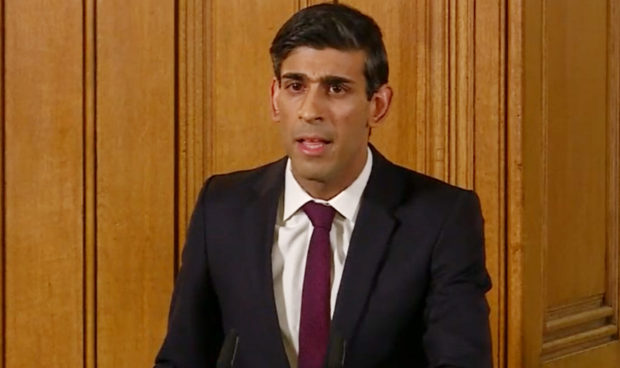
Nearly one in 10 workers whose wages were covered by the Government have said their bosses asked them to work during furlough, which was against the rules of the scheme.
The revelation comes in a report from the National Audit Office, which praised civil servants for pushing through employment support schemes at high speed, but said that, in their haste, they might have left some doors open for fraudsters.
The auditors said that HM Revenue and Customs (HMRC) should have made sure that employees knew their employer was taking furlough cash, so they could challenge potential fraud.
Around 9.6 million people were put on furlough through the Coronavirus Jobs Retention Scheme, while another 2.6 million were helped through the Self-Employment Income Support Scheme.
The NAO said there is evidence that the “schemes provided an effective bridge during the early phases of the pandemic, allowing some people to return to work when the national lockdown eased”.
By the end of July only around five million people were furloughed, while unemployment was broadly stable at 4%.
However, the number of people on payrolls dropped by half a million between March and April, and the NAO also found that one in five people who were not furloughed still had their wages or hours cut.
The NAO said the furlough scheme was rushed through at breakneck speed at the start of the pandemic. HMRC’s IT team usually needs 18 months to deliver major projects, but the furlough scheme was up and running in four weeks.
But, as a result, HMRC and the Treasury had to accept a “greater risk than normal” of fraud and error. The tax office’s original working estimate was a fraud and error rate of between 5% and 10% for the furlough scheme, meaning nearly £4 billion so far in cash terms.
The auditors said that “limiting applications to existing taxpayers should have reduced the fraud risk, but HMRC could have done more to make clear to employees whether their employer was part of the furlough scheme”.
Now HMRC faces the challenge of how to chase possible fraudulent claims, or payments made in error.
The department believes it would take 500 staff members to track down £275 million from 10,000 of the most high-risk furlough grants.
This is a high rate of return, but the department would have to take those workers away from its tax compliance team – which has an even higher return rate.
It takes 18 months to recruit and train new staff to perform the jobs, HMRC says, so that option is off the table. But this month the department decided to take on private contractors to do some of the work.
Initially, HMRC considered publishing the names of all employers that had claimed furlough, but it later decided against this, saying it could have deterred too many legitimate claimants.
Getting in touch with staff individually to say that their employer was claiming furlough cash to cover their salary, which might have alerted employees that their workplace was making fraudulent claims, was ruled out as too time-consuming.
It means that staff did not know if their employer was claiming money to cover their salary, unless the employer told them directly.
But HMRC has no qualms against such measures in the Jobs Support Scheme, which is due to come into force next month when furlough ends.
It will publish the names of employers who claim under the JSS, and will notify employees that their workplace has claimed support money to cover their salary.

Enjoy the convenience of having The Sunday Post delivered as a digital ePaper straight to your smartphone, tablet or computer.
Subscribe for only £5.49 a month and enjoy all the benefits of the printed paper as a digital replica.
Subscribe